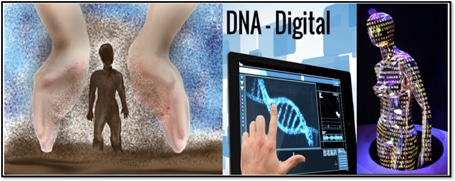From Dust-to-Digital – Let’s Solve Human Issues as Well
Technology continues to have a tremendous impact on business transformation through the vision and planning of many great C-level leaders. The impact has never been greater, and the very reason that the next technology transformation was given the impersonalized label called the Internet of Things (IoT). The name of Internet-of-Things (IoT) puts the focus on business transformation and access to personal ‘things,’ versus the ability to meet some of the humanity’s greatest challenges.
Unfortunately, many of the technologies that we have collectively designed, sold, and deployed around the world have solved many business issues but have also created an out-of-balance expectation from a human performance standpoint. The cause-and-effect of better digital business transformation has many workers on a digital treadmill that has exceeded their capability, ability, and capacity to keep up.
As a CIO who has an interest in people, relationships, and global advancement of education, I believe that technology is at the point it can solve human issues and advance human needs, versus just ‘things’ to improve the bottom line, or give more personal access to ‘things’. For this very reason, I spoke at the United Nations World Poverty Conference in April 2016 with the President of D2L, John Baker. The message, which is accessible below — helps people consider that the Internet is really about people, freedom, dignity, and human life. Therefore, a focus on an Internet for the People (IoP) may deliver better long-term outcomes than focusing on ‘Things’.
As CXO technology leaders, we each have the ability to look well beyond ‘things’ or ‘business’ transformation. We have the choice to leverage technology to move humanity forward and solve real human issues. In a digital world in which cosmos (air) is are now proven to be ‘digital’, we can send digital electrons to move around the world at the rate of 124,000 – 186,000 miles per second, and not just to transform business or access ‘things’. Knowing this capacity alongside the fact that the human genome (DNA) can now be researched in a digital form, allows possibilities unknown to previous generations. The question is … “will the next generation of CXO’s be known for a generation that cures ‘things’ or a generation that cures ‘people’. With the human body containing a minimum of 37 trillion cells that comprise our human genome (DNA), which can be digitally defined with six billion letters – surely, we can solve cancer, mental illness, and many of the other human-related items through technology. If we can access and move ‘things’ let’s make sure we are using all the computational power in our spheres of influence to remove human issues and advance human needs as well.
Knowing that the human DNA is digitized into six billion letters among trillions of human cells, each human body has a digital footprint of 60 Zettabytes of data that can be analyzed for new discovery. A Zettabyte is equivalent to 6,000 years’ worth of HD quality video…or stream the entire Netflix catalog more than 3,000 times, and equivalent to about 250 billion DVDs.” No wonder scripture has stated that each individual is ‘fearfully and wonderfully’ made. God may have made/created mankind from dust, but it is also true that God can provide the leaders and the computer science methods within a digital world the passion and ability to discover new human discoveries. Below is a simple diagram I enjoy using to illustrate the concept of ‘Dust-to-Digital’.

20 years ago, a computer system delivered 10,000 calculations per second, but today we can process calculations at a PetaFLOP per second — which is equivalent to one calculation per second for 31,688,765 years. Computer science gives the potential of no longer waiting for that one ‘smartest person’ to find the solution; rather it is ready for that one pico-second of time where enough partial solutions are simulated and analyzed to produce the ‘final’ cure for cancer.
An example of moving data for human needs or the IoP, Oral Roberts University completed a Global Learning Center that has supercomputer access and a full enterprise edition of Virtual and Augmented Reality (AVR). ORU’s Reality is to reach millions of people around the world with whole person education, to solve big problems with big plans. ORU’s Professor Dr. Joel Gaikwad is shown in the video below explaining human anatomy, tumors and cancer in ORU’s Reality Room which leverages trillions of bytes of data in EON Reality’s Global Enterprise AVR environment to explain a piece of his advanced cancer research.
Oral Roberts University Dr. Joe Gaikwad and Michael Mathews using trillions of bytes of data for the visualization of cancer research with virtual and augmented reality
Michael L. Mathews
Chief Information Officer, Oral Roberts University




